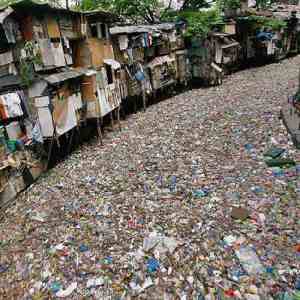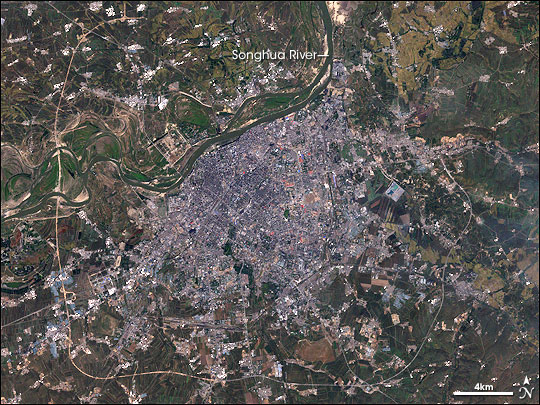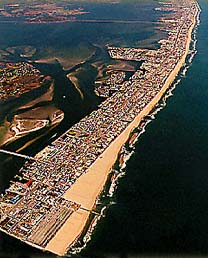WILD FACTS SERIES –
Tourism: The Most Destructive Human Activity After Warfare
-
After warfare, tourism [euphemistically eco-tourism] is the most destructive human activity. ~ EDRO
-
Tourism [euphemistically and deceitfully referred to as eco-tourism] Is Eco-Terrorism!
-
A Definition of Eco-terrorism by Paul Watson: An act that terrorizes other species and threatens the ecological systems of the planet.
Basic ecological facts:
1. Human activities degrade ecosystems.
2. Intensive human activities destroy ecosystems.
3. After warfare, tourism is the most destructive human activity. ~ EDRO
An excerpt from: Beautiful coastlines disappearing under concrete
Humans may live in almost every corner of the globe, but our favourite place is the sea. As coastlines around the world are [rapidly] turned into new housing, holiday homes, and tourist developments, this intense human presence is taking a huge toll on marine ecosystems and species.
- Coastal areas are the most densely populated areas.
- Tourism is the world’s top growth industry.
- The coasts are a powerful magnet for tourism.
- The continental shelf is among the most productive and biologically diverse areas on Earth.
- About 80% of all tourist flock to coastal areas.
- Beaches and coral reefs are the most popular destinations.
- The coral reefs in Honolulu, Hong Kong, Manila, and Singapore have been destroyed mainly from coastal development.
- Eight of the world’s ten mega cities are located on the coast: Buenos Aires, Calcutta, Lagos, Los Angeles, Mumbai, New York City, Shanghai, and Tokyo.
“Massive influxes of tourists, often to a relatively small area, have a huge impact. They add to the pollution, waste, and water needs of the local population, putting local infrastructure and habitats under enormous pressure. For example, 85% of the 1.8 million people who visit Australia’s Great Barrier Reef are concentrated in two small areas, Cairns and the Whitsunday Islands, which together have a human population of just 130,000 or so.” WWF Reported.
In New Zealand about one half of a million tourists go dolphin watching and more than one million visitors whale-watching off Kaikoura each year. As a result, up to 10 per cent of bottlenose dolphins in New Zealand’s Fiordland are injured and scarred by collisions with boats.
The 2.6 million “eco-tourists” who fly to New Zealand each year to watch whales and dolphins destroy the marine environment and harm the creatures they come in contact with. But the marine pollution, the harm and the damage they inflict on the defenseless creatures is only part of the overall picture. The visitors consume an estimated 3.2 billion gallons of fuel to fly in and out of New Zealand.
Overdevelopment
The largest sources of stress to the marine ecosystems are mega developments in coastal areas built to attract tourists including airports, resorts, golf courses, marinas, duty-free shopping centers and amusement parks.
In many areas “mangrove forests and seagrass meadows have been removed to create open beaches tourist developments such as piers and other structures have been built directly on top of coral reefs.”

Mangrove Forest (Photo Credit: NOAA)
The Insanity of Tourism
- Many tourist resorts discharge their untreated sewage into the coastal waters.
- Jet skiing, boating, sailing, windsurfing, diving, snorkeling, and fishing have destroyed coral reefs in many parts of the world.
- Building Dams, dykes, and other protection against storm surges and high tides destroy ecosystems and rare habitats like salt marshes.
- Providing additional food and freshwater for millions of tourists is a major problem. Dramatic increases in consumption of seafood leads to overfishing. Local sources of freshwater and other natural resources are degraded. Collecting or trading in marine souvenirs accelerate the rate by which marine ecosystems are degraded and destroyed.
- Increasing numbers of dolphins, whales, marine turtles, sharks, seals and birds are disturbed, injured or killed from accidents with large numbers of boats ferrying “eco-tourists” close to their habitats.
Superjumbo Floating Towns
Increasingly, popular cruise ships capable of carrying up to 6,000 passengers and crew are a major source of marine pollution. Weighing in excess of 160,000 tons, the billion-dollar 340-meter long sea monsters (they contain 1,700-seat theaters, shopping malls, a hospital and 3 massive wave pools one with a surf simulator) pollute the marine environment through dumping millions of tons of untreated sewage, garbage cleaning agents, chemicals and bilge oil (a mixture of oil, water, lubricants, and other pollutants) as well as tens of billions of tons of ballast water. [The Floating Towns consume about 13 tons of fuel per hour!]
“Dumped bilge oil accounts for nearly 10% of all oil entering the oceans each year. On the eastern coast of Canada alone, dumped bilge oil kills at least 300,000 seabirds each year – more than the total number killed by the Exxon Valdez oil spill in Alaska in 1989.” WWF reports .
The Fastest-growing Sector
Tourism is the world’s fastest-growing economic sector; it generates about 12 percent of Global Domestic Product, GDP, Employs about 250 million people, and transports nearly 1billion overseas travelers per year.
The Continental Shelf
The continental shelf, the extended perimeter of each continent and its associated coastal plain, holds about 85 percent of all ocean resources.


The Coast and its associated continental shelf. Credit: wikimedia


Credit NOAA. Source: Wikimedia
Comments by Readers:
[Quote] Unless you can walk, swim or skydive to your “eco-tourism” destination WITHOUT stressing the earth, [eating, drinking otherwise] littering the environment or relieving yourself during the visit, “eco-tourism” IS an oxymoron.
Eco tourism destroys biodiversity and harms local communities AND is a greenwash. http://www.twnside.org.sg/title/eco5.htm
Eco tourism is harming marine wildlife. http://www.cdnn.info/eco/e020829/e020829.html

The Baby Dolphins Death Row in New Zealand
A good Eco-Tourist stays at home; otherwise, they build a Hotel on top of the Eco-Systems they think they are saving. http://www.hobotraveler.com/2005/05/agro-tourism.html
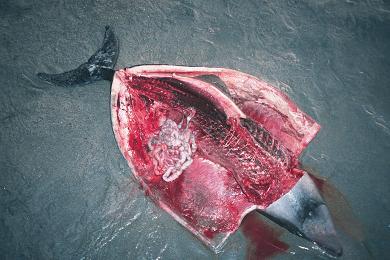
The New Zealand Deep Cut: photos courtesy of Care For The Wild International
Adventure travel and Eco-tourism destroy the very things they are supposed to venerate http://photo.net/bboard/q-and-a-fetch-msg?msg_id=000Fwi
Building of dams and development of eco tourism destroy the ecology of the regions and the natural environment. http://nara.tumblr.com/post/8465159
A major impact on the forest are the pressures caused by accommodating the physical needs and comforts of tourists; impacts of providing wood for fuel, accommodation and access routes, together with the problems caused by tourists’ rubbish, put a large stress on the environment. For example, litter has been strewn along the trails of popular Himalayan tourist routes, and the alpine forest decimated by trekkers looking for fuel to heat their food and bath water [and dump their feces]. http://www.unesco.org/education/tlsf/TLSF/theme_c/mod16/uncom16t03s02.htm
The “Knights of Eco Tourism” [and their airlines, hotel chains…] are the rubber barons of 21st century. [end quote] ~ submitted by Lisa
[Quote] Monetizing Earth’s ecosystems is the most troubling issue that hasn’t been addressed. The argument that “looking at only the damage side of eco-tourism is ignoring the impact of whatever activity the land might otherwise be put to if not for eco-tourism” is fallacious. The former British Crime [Genocide] Minister, Tony Blair, was once asked why Britain under his Labor government exports more weapons then ever before [about $10 billion each year]. His reply was, if Britain didn’t export weapons someone else would! [If such fallacy goes unchecked, the only possible outcome of the vicious spiral of destruction in any system, social or ecological, would be the ultimate demise of that system, its total collapse.]
Tourism, by definition, is a business activity that involves providing accommodation, food, services, entertainment… for people who visit a place for pleasure. In our exponential growth culture, businesses must grow exponentially in order to remain viable, let alone be profitable. Exponential growth in tourism means larger numbers of visitors crowding into the same attractions; in the case of eco-tourism, frequently, fragile ecosystems are damaged irreversibly. Eco-tourism, like plague, destroys everything in its path.
One of the links Lisa posted, “Eco tourism harming New Zealand’s marine wildlife,” is about the mounting impact of tourism on whales and dolphins around New Zealand’s coastline: http://www.cdnn.info/eco/e020829/e020829.html

Hector’s Dolphin: More marine mammals are being injured and killed in collisions with boats carrying Eco-tourists in New Zealand. Photo courtesy of CDNN
Here are some of the facts quoted from the report:
About one half of a million tourists go dolphin watching in New Zealand. “Whale-watching off Kaikoura attracts up to one million visitors a year.”
“In Fiordland, 7 per cent of bottlenose dolphins had been scarred by collisions with boats, said Otago University marine ecologist David Lusseau.”
“‘I am afraid Doubtful Sound will become another Milford Sound, where about 7 per cent of the population bear scars from boat collisions and where dolphins avoid the fiord when boat traffic is too intense,’ he said.”
As for the pollution created by the air travel to New Zealand, “About 1.56million visitors from Northern Hemisphere [about 62% of the total number of tourists who visited New Zealand in 2006] produced a total of 17million tons of CO2e on their return flights to New Zealand last year, which significantly contributed to further deterioration of our failing ecosystems.”
http://www.scoop.co.nz/stories/PO0611/S00286.htm
To watch dolphins, whales… the “eco-tourists” from North America and Europe consumed about 2.71 billion gallons of fuel on their return flight to New Zealand.
As Lisa says, a good eco-tourist should stay at home to avoid flying, driving and building hotels, roads and other infrastructure on top of the eco-systems they are trying to save.
There’s no reason why concerned local communities couldn’t take advantage of the 21st century’s bleeding-edge technology videoing their precious ecosystems and broadcasting to paid subscribers (the true eco-tourists) throughout the world. Financially, it’s a much more viable option. It makes perfect commercial sense when compared to building harmful, expensive accommodation and infrastructure accommodating the tourists. Environmentally, it’s an infinitely more intelligent option because of the near zero impact on both the local ecosystems and biosphere. [End quote] ~ A Concerned Reader
Related Links:
Coastal Development
Coastal development like below projects destroy marine habitat.

Another Coastal Development. Source: Social responses (PDF)

Huntington Beach, California.

Image may be subject to copyright. (Source Google)

Source: Blog of San Diego

Acapulco Hotels, Mexico. Image may be subject to copyright. (Source Google)

China (Source: Watthead) Image may be subject to copyright.

Image may be subject to copyright. (Source Google)

The Palm, Deirah, Dubai, United Arab Emirates Copyright © 2007 The Emirates Network
See FEWW Fair Use Notice.

The Palm, Jumeirah, Dubai, United Arab Emirates Copyright © 2007 The Emirates Network
See FEWW Fair Use Notice.

The Palm, Jebel Ali, Dubai, United Arab Emirates Copyright © 2007 The Emirates Network
See FEWW Fair Use Notice.
Plastic Pollution

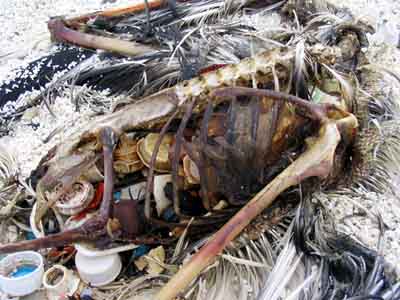
(Above) Albatross chick (Photo Credit: Cynthia Vanderlip. Source: mindfully.org)
(Below) Decomposed carcass of a Laysan albatross on Kure Atoll (North Pacific)
with gut full of plastic objects. “The bird probably mistook the plastics for food and
ingested them while foraging for prey. The plastic goes down the gullet quite easily.
But since it is not digested, as in the original plan for all life, it gets stuck before
exiting the stomach. There it sits to block the entry and digestion of legitimate food.
Even the tiniest of pieces can cause blockages.” (source: mindfully.org)
Only if all nations adopt a “Zero Waste” policy, could marine pollution be stopped!

Ocean Pollution: Shamefully yours! (Credit: Gavin Newman)
Impacts of Coastal Armoring
“Environmental impacts of coastal armoring are both site specific and cumulative. Coastal armoring can potentially damage or alter local coastal habitats, deprive beaches of sand, lead to accelerated erosion of adjacent beaches, hinder access and present problems with public safety.”

Photo Credit: NOAA
Coming Soon:
Oil Pollution
References:
- Landry, C.A., S. Manning, and A.O. Cheek. 2004. Hypoxia suppresses reproduction in Gulf killifish, Fundulus grandis. e.hormone 2004 conference. Oct. 27-30. New Orleans.
- Murphy, C. . . . P. Thomas, et al. 2004. Modeling the effects of multiple anthropogenic and environmental stressors on Atlantic croaker populations using nested simulation models and laboratory data. Fourth SETAC World Congress, 25th Annual Meeting in North America. Nov. 14-18. Portland, Ore.
- Johanning, K., et al. 2004. Assessment of molecular interaction between low oxygen and estrogen in fish cell culture. Fourth SETAC World Congress, 25th Annual Meeting in North America. Nov. 14-18. Portland, Ore.
- Nutrients in the Nation’s Waters–Too Much of a Good Thing? U.S. Geological Survey Circular 1136.
Related Links:
Please see our Fair Use Notice!
